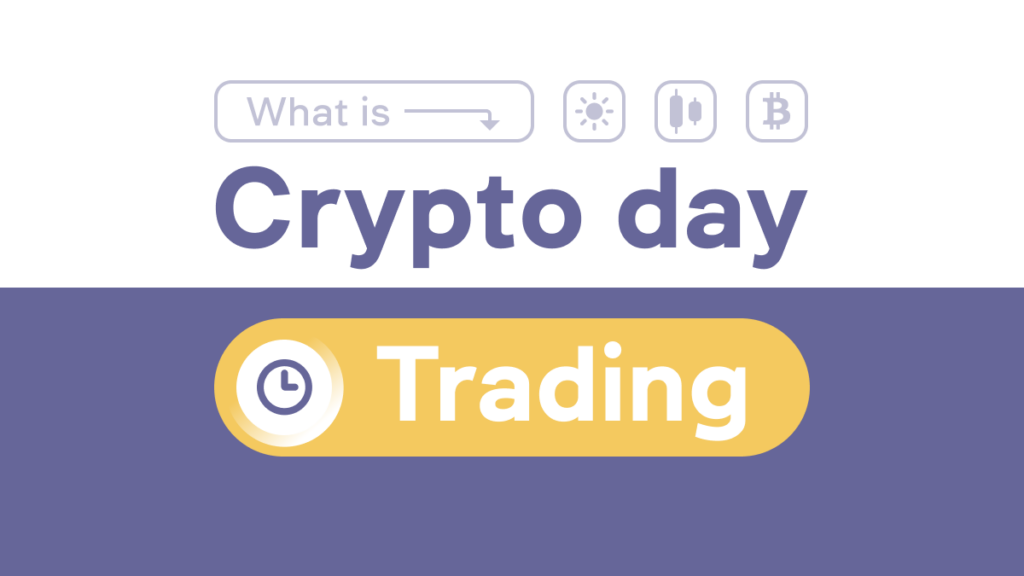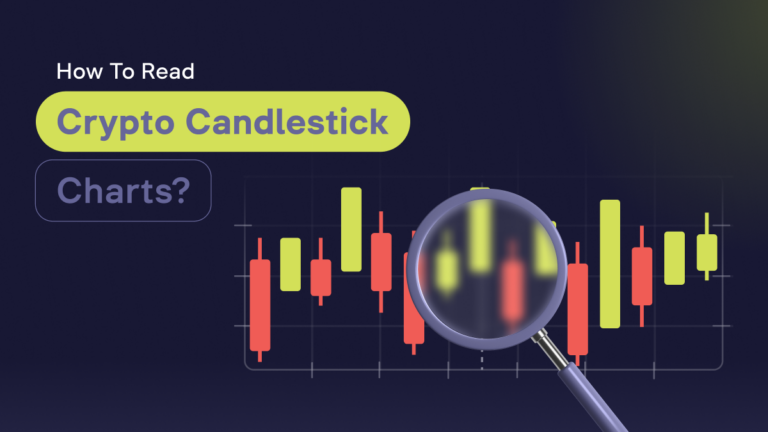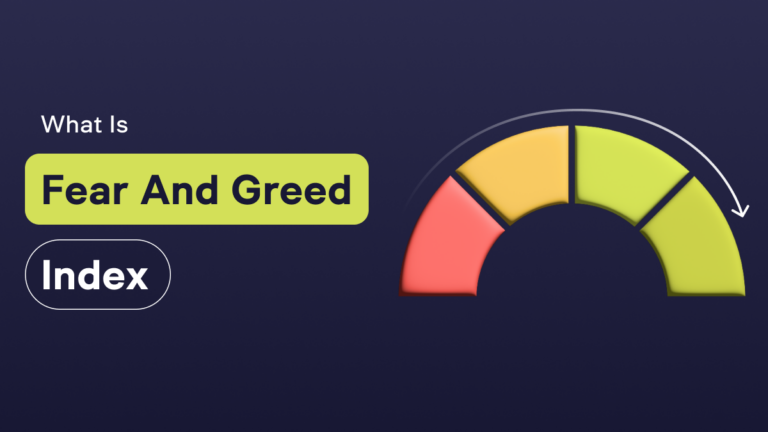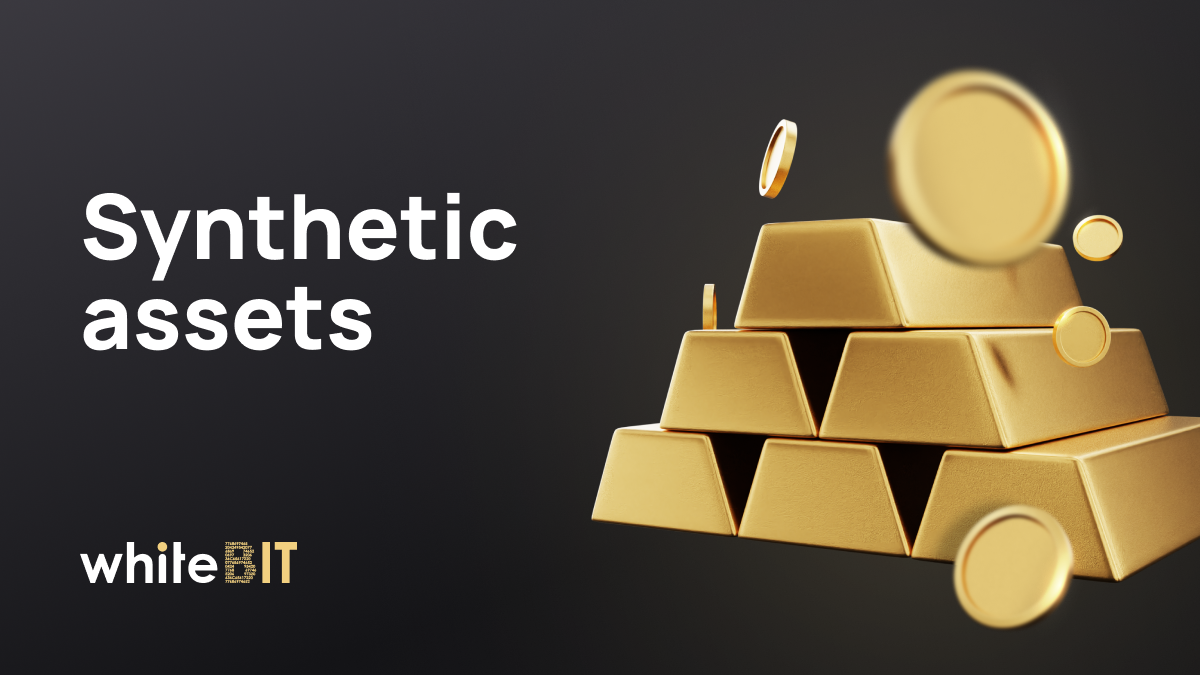A Beginner’s Guide to Day Trading Crypto

Content
Day trading is cryptocurrency trading, where a trader opens and closes positions within one day. In simple terms, day traders aim to profit from intraday price movements and do not hold positions overnight.
In this article, we will give a comprehensive idea of what day trading with crypto is, consider its principles, pros and cons, tools, and strategies of day trading.
What Is Day Trading Crypto?
Cryptocurrency day trading is speculative trading in the cryptocurrency market, the essence of which is to profit from fluctuations in the price of digital assets within one day. The “day trader” expression originates from the stock market, where trading happens only on weekdays for a few hours a day.
Instead of holding their positions for long periods, day traders open and close trades quickly, often within minutes or hours.
Day traders utilize various tools of technical and fundamental analysis to make informed decisions about entering and exiting positions. They may rely on charts, trading volumes, market sentiment, and other indicators to identify potential trading opportunities, along with a multitude of other instruments.
Key Principles of Crypto Day Trading
Short-term trading. Day trading in cryptocurrency involves a series of quick trades within a single day with the aim of profiting from short-term market price fluctuations. Day traders analyze price charts and use technical indicators to make informed decisions, focusing on rapid buy and sell actions. Short-term trading typically involves transactions that last for seconds, minutes, or a few hours. This approach capitalizes on the high volatility of cryptocurrencies, allowing traders to take advantage of the fast market movements.
Frequent trades. Day traders are indifferent to whether the cryptocurrency price is rising or falling. Traders may use scalping and high-frequency trading tools. Scalping covers relatively longer time periods and is typically applied by traders manually or with limited automation, whereas high-frequency trading is geared towards extremely short time intervals and is executed using algorithms and trading bots.
Technical analysis. Day trading of cryptocurrency often involves the use of technical analysis. Traders use charts, technical indicators, and patterns to analyze historical price data and predict future price movements. Common tools include moving averages (MA), relative strength index (RSI), Bollinger Bands (BB), and others.
Risk Management. Effective risk management is critical in day trading. Traders set Stop-Loss orders to limit potential losses on each trade. In addition, it is important to control position size, as day traders are pushed to a certain percentage of their capital per trade.
How to Day Trade Crypto
Choosing the right trading platform
The first thing you need to do before you start trading is to choose an exchange. What parameters should a reliable exchange meet? Let’s take WhiteBIT as an example.
One of WhiteBIT’s key priorities is the security of clients’ funds and personal data. The exchange stores 96% of digital assets on cold wallets and uses a Web Application Firewall (WAF) to detect and block hacker attacks, so funds on WhiteBIT are always safe.
The platform has undergone an audit by Hacken.io, leading cybersecurity experts specializing in blockchain technologies. According to audits conducted by Hacken.io and the certification platform CER.live in 2022, WhiteBIT meets the highest security standards and ranks among the top three exchanges for reliability with the highest AAA rating.
Also, the WhiteBIT exchange has an insurance fund to protect users’ assets, which is replenished by contributions from transaction fees. At the moment, it insures assets worth $30 million. In addition, WhiteBIT offers a diverse set of orders, a large selection of cryptocurrency pairs for trading, and the ability to deposit the wallet directly from a bank card.
Setting up a Cryptocurrency Trading Account
Only 3 points separate you from your first deal on WhiteBIT:
- Register on the site
Enter your email and a strong password;
Enter the referral ID if someone invited you;
Confirm email.
- Confirm your identity
Upload your documents
- Enable two-factor Authentication (2FA)
To do this, download Google Authenticator or another secure authenticator.
Funding Your Trade Balance
To replenish your Trade balance:
- Open “Balances”, click “Total,” and then “Deposit”.
- Select the desired asset and payment method. Since WhiteBIT is a crypto-fiat exchange, it allows one to top up the balance using both digital assets and national currencies.
- To transfer funds from the Main to the Trade balance, click “Transfer,” select an asset, and enter the desired amount to transfer.
Selecting the Right Cryptocurrencies to Trade
Choosing a cryptocurrency for trading is an integral part of success during trading. It is important to consider factors such as the liquidity of the cryptocurrency, its volatility, future news and updates, and others. Learn more about how to day trade crypto by exploring each component of choosing an asset:
Volatility: Day traders typically choose cryptocurrencies with high volatility. Volatility indicates the asset’s tendency for sharp price fluctuations, and it is an attractive factor for day traders as it allows them to quickly profit from short-term market movements.
Liquidity. Cryptocurrencies with high liquidity are great for intraday trading. Liquid cryptocurrencies are those that have sufficient trading volume and can be easily exchanged for other assets or national currencies. This will make it easier to enter and exit positions and reduce the risks associated with the complexity of order execution.
News and Events. Follow news and events in the world of cryptocurrencies. News can cause sharp price changes and create opportunities for trading. Therefore, it is worth following such events as hard forks and public announcements.
Trading strategy. Before you start trading, conducting a thorough fundamental analysis of the selected cryptocurrency is necessary. This analysis includes evaluating the technology, the development team, historical market data, and future prospects. Strategy defines the goals and methods to achieve success in the market. Trading from support and resistance, scalping, range trading, and other methods are not universal strategies for all cryptocurrencies.
Risk Assessment and Tolerance
Risk Assessment: This involves identifying and analyzing potential risks associated with each trading operation. Both fundamental and technical analysis are used for accurate risk assessment. Additionally, traders can utilize the Risk/Reward (RR) ratio, calculated by dividing the expected profit from closing a position by the amount a trader could lose in the event of a price reversal. It’s important to note that indicators of potential risk and profit are formed after a thorough asset analysis rather than solely by placing Take-Profit and Stop-Loss orders.
Risk Tolerance Assessment: Assessing risk tolerance in cryptocurrency day trading involves determining the trader’s willingness to endure losses. Simply put, it is the acceptable level of loss a trader can tolerate. Risk tolerance may include defining the level of Stop-Loss, position size, capital management strategy, and other aspects to strike a balance between potential profit and possible losses.
Pros and Cons of Cryptocurrency Day Trading
Pros:
- High profit potential: Day trading allows traders to speculate on short-term fluctuations in asset prices by predicting changes in their value over a single trading day.
- Flexibility: Traders make quick profits and losses, allowing them to constantly change assets and trading tactics without spending months on a single trade.
- No overnight risk: Day traders do not hold positions overnight, so they are not exposed to risks associated with overnight price fluctuations or events.
Cons:
- Stress and pressure: The fast pace of day trading can be psychologically and emotionally draining. Traders often have to continuously monitor the market and make quick decisions, which can lead to impulsive actions and stress.
- Commissions: frequent trading can lead to high transaction costs associated with commissions and spreads, reducing potential profits.
- High entry threshold: making trades within a single day can be riskier for beginners. On the one hand, careful analysis is required to make trading decisions. On the other hand, systematic day trading requires a trading and risk management strategy. Studying a lot of information and preparing thoroughly is crucial before you start day trading.
- Time: Day trading is time-consuming, as it requires constant monitoring of markets and positions throughout the day.
Crypto Day Trading Tools
Candlesticks Charts: Japanese candlesticks are a graphical representation of price activity in the market. Each candlestick represents the price range over a specific period of time. Candlesticks form a price movement chart that traders analyze. Candlestick charts are believed to create patterns and formations that help predict future market changes. Therefore, candlestick analysis, like pattern analysis, can be used to forecast future price movements.
Moving Average (MA): The moving average in technical analysis is an indicator that uses the average price value for a certain period of time. This tool helps traders determine when an asset becomes overbought or oversold. If the price is above its moving average, this can indicate that crypto is overbought, and investors can expect a correction. Conversely, if the price is too low in relation to its moving average, it may indicate the asset is becoming oversold.
The Relative Strength Index (RSI) is a technical indicator that helps traders assess how overbought or oversold an asset is in the market. The RSI indicator compares the strength of the rise and fall in the price of an asset. The RSI value can range from 0 to 100. The generally accepted level of overbought asset is above the value of 70, oversold — below 30. Also, RSI is often used in combination with other technical indicators and price chart analysis.
Analytical platforms: Traders can use news and analytical resources such as CoinMarketCap, CoinGecko, and others to inform themselves about events in the world of cryptocurrencies and their impact on the market.
Event calendars: Events such as hard forks, ICOs, and announcements can significantly impact prices. Event calendars, such as CoinMarketCal, help you keep track of events in the cryptocurrency world.
Cryptocurrency Day Trading Strategies for Beginners
Scalping is a short-term trading strategy in which traders seek to profit from small and rapid price movements within a single trading day. Scalping involves holding positions for only a few minutes or even seconds.
Momentum trading — this strategy involves capitalizing on short-term price movements caused by a strong and sustained momentum in the price of a cryptocurrency. Such positions can be held for a few seconds or throughout the day. In momentum trading, a trader should enter the market on a fast and sharp price movement and exit the trade when, in their opinion, the momentum has reached its logical conclusion.
Swing trading involves capitalizing on short and medium-term price fluctuations during the trading day. Swing traders identify trends using technical analysis, select entry points based on indicators or chart patterns, set risk management tools such as Stop-Loss and Take-Profit orders, monitor positions for several hours, and exit trades when the price reaches predetermined levels.
Support and Resistance. One strategy option in day trading is to focus on identifying key support and resistance levels on price charts. When the price approaches a support level, the trader can consider buying, and when it approaches a resistance level, selling. This strategy is best suited for situations when volatility is quite low, and the price of an asset fluctuates within one range for a long time.
Using basic patterns. By emphasizing basic chart patterns such as flags and triangles, you can wait for a price breakout and trade in the direction of the breakout. This strategy is very simple but does not guarantee 100% successful trades.
Risk Management. Instead of focusing solely on trading strategies, risk management is the first priority for beginner traders. It is better to start with small position sizes, use Stop-Loss orders, and improve your trading strategy to achieve the best results by minimizing risks.
Common Mistakes in Day Trading Cryptocurrency
FOMO and FUD. Buying cryptocurrency solely because of social media discussions is a mistake. Such actions are due to FOMO (Fear of missing out) — fear of lost opportunity or lost opportunity syndrome.
FUD stands for “Fear, Uncertainty, and Doubt,” which can be translated as “Fear, Uncertainty, and Doubt.” This term is often used in the cryptocurrency world to describe situations where someone spreads negative information or rumors about a specific cryptocurrency or the market in general. This is usually done intending to cause panic among investors or undermine trust in the asset.
Both phenomena deal with emotions, and emotions are the main enemy of any trader because they cause impulsive trading decisions that are not backed by analysis.
Overtrading. Due to frequent trading after a string of successful trades, an unhealthy sense of admiration and faith in one’s trading ability or strategy may develop. The trader may stop sticking to the trading plan, and this approach may lead to losses sooner or later. Intraday cryptocurrency trading requires adequate assessment of the situation and strict adherence to one’s trading strategy.
Ignoring risk management. Trading without utilizing a risk management strategy can lead to significant losses. Always determine your risk tolerance and apply risk management techniques (Stop-Loss orders, position size control, and others).
Tips for Crypto Day Trade
Training on a demo account. Gaining experience before you start trading will definitely not be superfluous. This option is available on many platforms. For example, the WhiteBIT exchange offers registered users to get 1000 DUSDT and 0.5 DBTC. Demo trading is a great chance to practice without risking real money.
Self-education. Before you start trading, it pays to thoroughly educate yourself about the cryptocurrency market, tokens, and trading strategies. Knowledge is one of the keys to making informed decisions.
Developing a plan. To trade systematically and efficiently, you need a clear trading plan that specifies your goals, risk tolerance, tools, and strategy. Professional day traders stick to their plans and avoid impulsive decisions.
Trade liquid pairs. It is better to trade cryptocurrencies with high liquidity and trading volume, such as Bitcoin and Ethereum. Liquid pairs are less susceptible to price manipulation, they have low spreads, and orders execute quickly.
Careful analysis. Before opening each trade, you should conduct a detailed analysis. For this purpose, you can use candlestick, technical, fundamental, and other methods of analysis, including indicators. Common indicators include moving averages, RSI, and Bollinger Bands.
Keeping emotions in check in trading. News or sudden price changes can lead to impulsive decisions, which can then result in losses. However, every trading decision a trader makes should be based on analysis and in line with their trading strategy. Perhaps the most dangerous trades can be those that a trader makes on fear or greed.
Realistic plans. Don’t expect to get rich overnight. Set realistic profit targets, and don’t chase extreme returns. Consistency is key in day trading.
Choosing a trading platform. When choosing an exchange, you should consider its reputation and the availability of features such as 2FA and cold storage of assets. It is also important to pay attention to the convenience of the interface and the range of trading pairs. In addition, it is necessary to study what fees for trading are taken by the exchange. It is especially essential in day trading as they make a lot of transactions during the day.
FAQ
Yes, this is called day trading. Day trading in cryptocurrency involves opening and closing positions within one trading day. The goal of traders is to capitalize on short-term price movements.
When picking a cryptocurrency for day trading, you should consider factors such as liquidity, trading volume, volatility, and familiarity with the asset.
The success of day trading cryptocurrencies depends on understanding crypto day trading rules, strategy, discipline, and the ability to manage risk effectively. It is also worth considering that this type of trading requires higher commission costs.
Cryptocurrency markets are usually open 24 hours a day, including weekends. This means that day traders can trade cryptocurrencies on weekends just like they can on weekdays.
Is the cryptocurrency market always open?
Yes, the cryptocurrency market is open 24 hours a day, 7 days a week. This allows you to choose when and how to day trade cryptocurrency.
The best time depends on your selected strategy, specific cryptocurrency, and schedule. Cryptocurrency prices are driven by supply and demand. Consequently, the best time to day trade is when the market is the most active.
Yes, it is possible to make money on day trading cryptocurrency, but success depends on knowing how does crypto day trading work, skills, strategy, and the ability to manage risk effectively.
- What Is a Cryptocurrency Exchange? Everything a Beginner Needs to Know
- How to Create a Cryptocurrency?
- What Are Crypto Futures, and How Do They Work?
- What is Blockchain Technology, And How Does It Work?
- Types of crypto wallets
- What is cryptocurrency mining?
- What Is Crypto Scalping, and How Does It Work?












